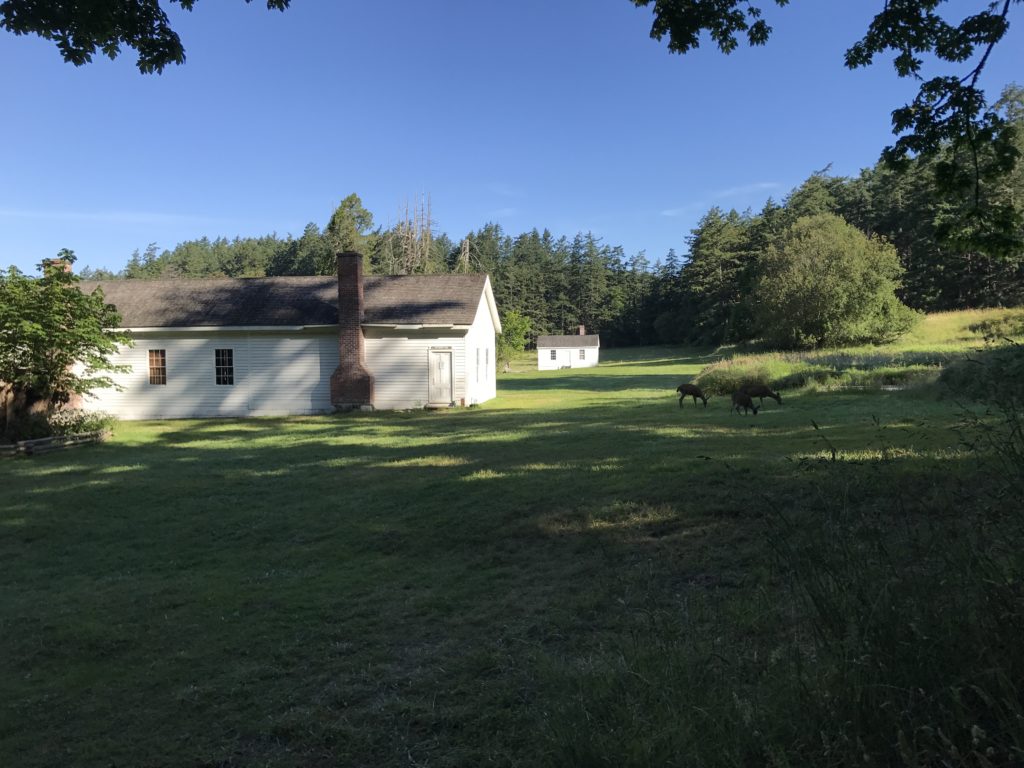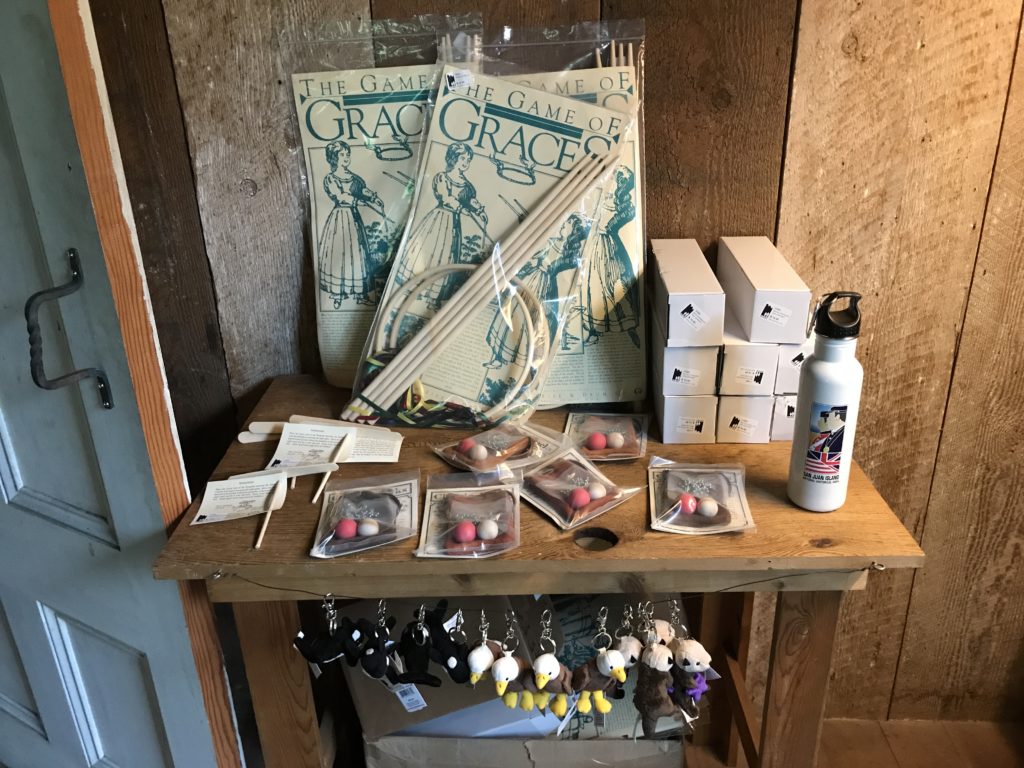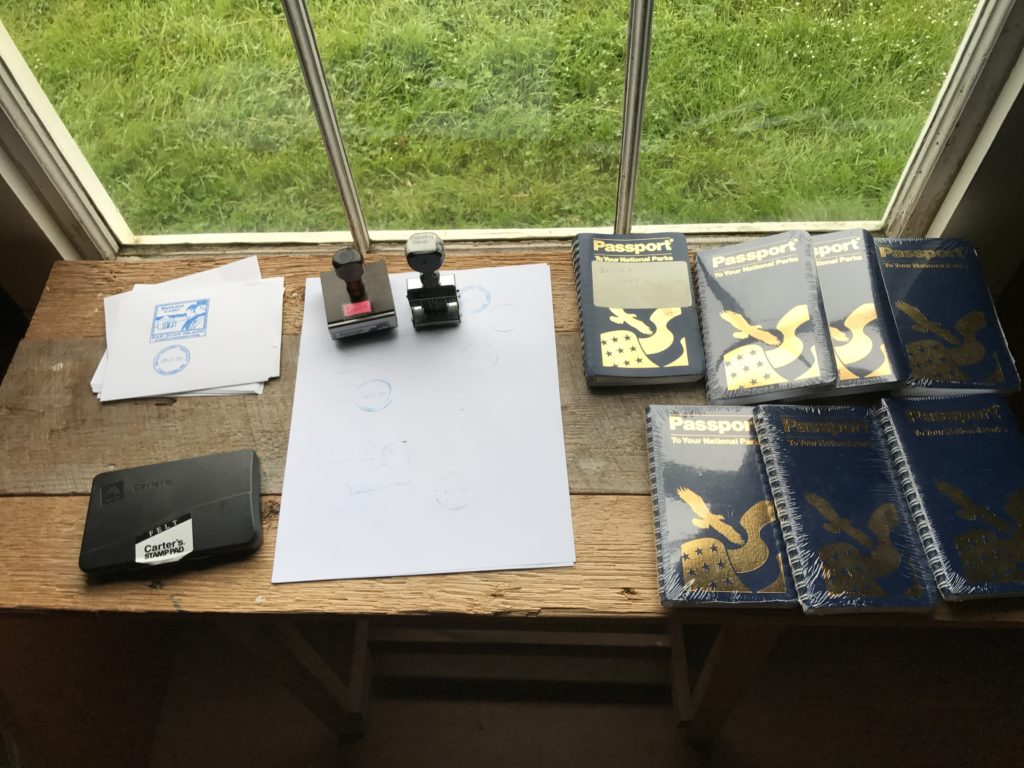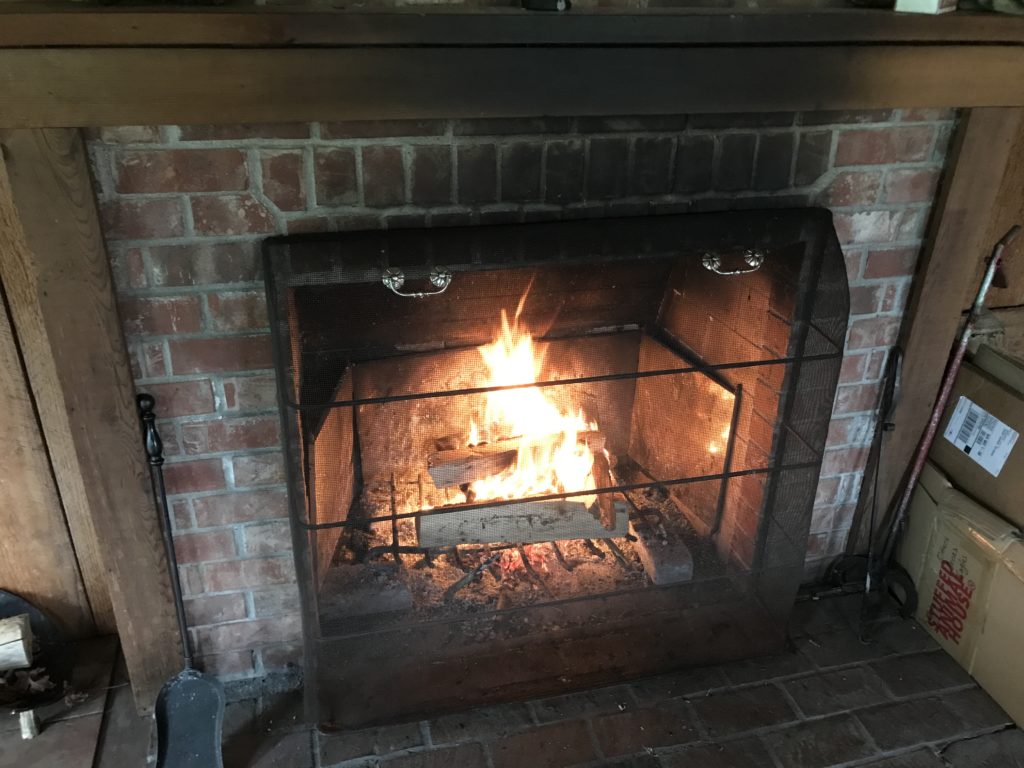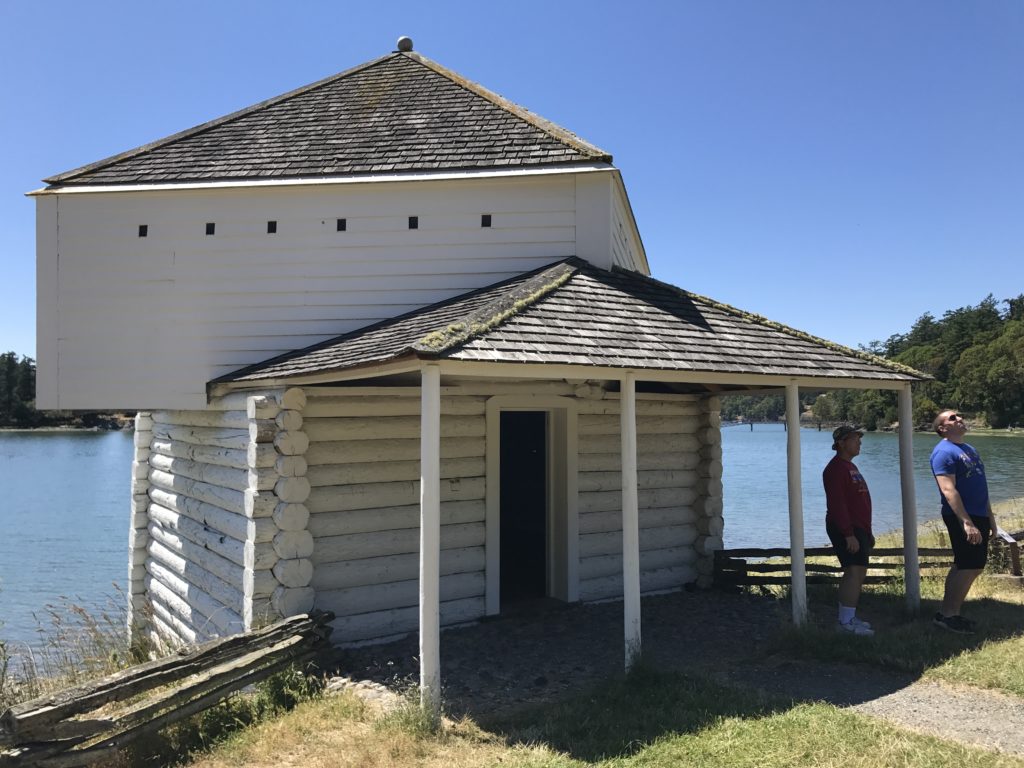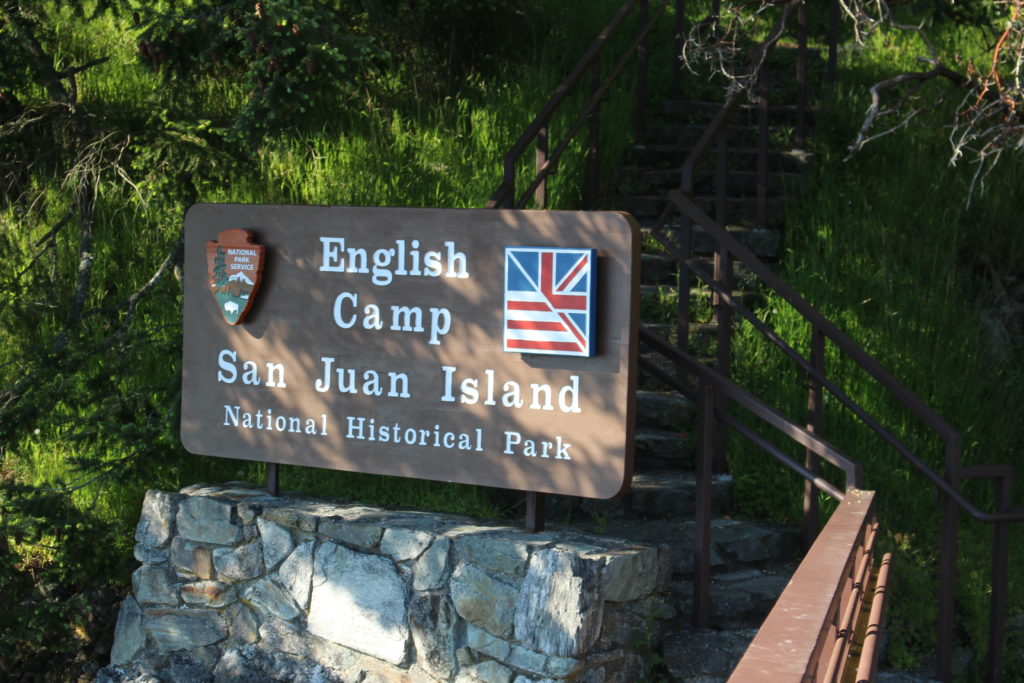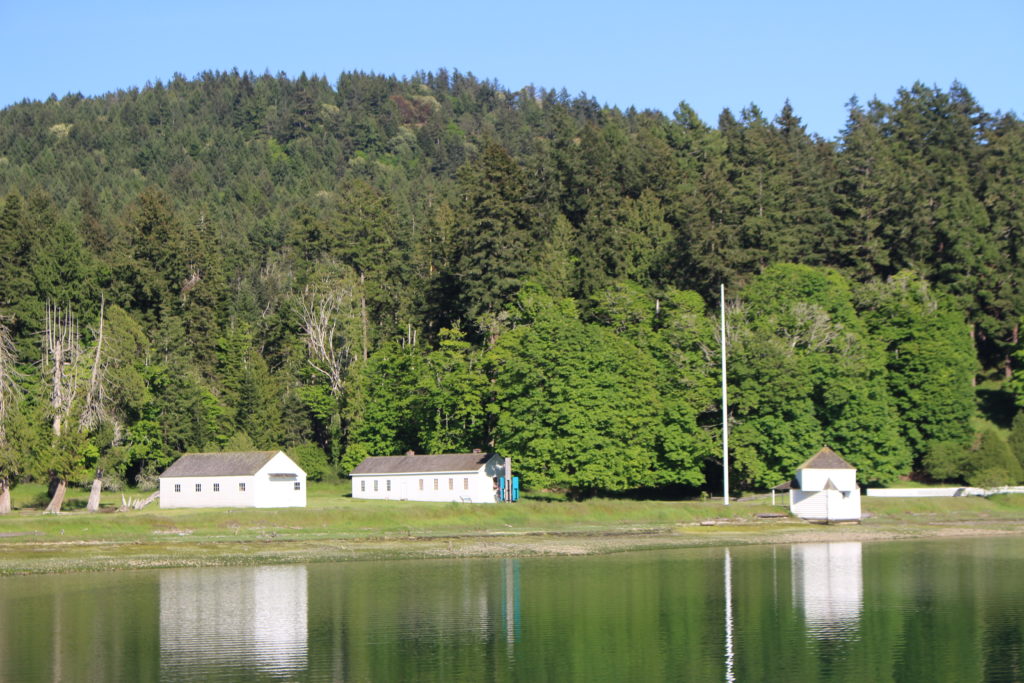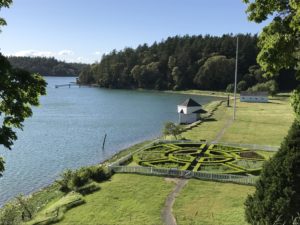
Tom and I work and live at English Camp, the counterpart to American Camp at San Juan Island National Historical Park. By joint agreement, the British and Americans each occupied camps of equal size. The Americans chose their site hurriedly and with an eye to annoying the British as much as possible.
After General Scott negotiated the peaceful co-occupation of the island, the British took their time choosing a site for their camp. They chose a secluded spot on the island with plentiful fresh water, a large field for a parade ground, and a sheltered bay. This is where the British set up their camp.
During the 12 years of occupation, English Camp consisted of about 80 Royal Marines and 27 whitewashed buildings. The Marines took pride in the camp and kept it in very good order. The camp was well-supplied from Victoria, the provincial capital, just across the Haro Strait. After arbitration ruled in favor of the Americans, the British left the camp.
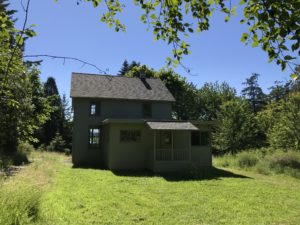
Soon a farming family, the Crooks, homesteaded on the land. They preserved some of the buildings, lived in others, and sold some. Today four of the original buildings remain, three of them on their original foundations. The Visitors Center is in the “Barracks,” which was the enlisted men’s mess with a room added on for additional barracks space. There is a guardhouse and a storehouse. We open the guardhouse everyday, but we store stuff in the storehouse, so it is kept locked. Recently the National Park Service brought back an original house that had been moved to town and moved it back to the camp.
English Camp has 600 acres and four nice hiking trails. Tom and I do roving interpretation on the trails most days we work. I will be writing more about some of the trails and sharing some pictures later, so I won’t go into detail about them now.
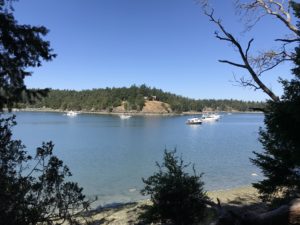
Garrison Bay is a popular spot for boats to anchor. There are always boats in the bay – over the 4th of July there were 100+ – and they use our dock for land access. The San Juan Transit bus stops in our parking lot. The boaters tie their dinghies to our dock, walk through the park to the parking lot, board the bus, and ride into town for grocery shopping or other activities. Some days we get as many visitors to the park by sea as we do by land.
Tom and I enjoy working at English Camp and sharing our love of history with our visitors.

